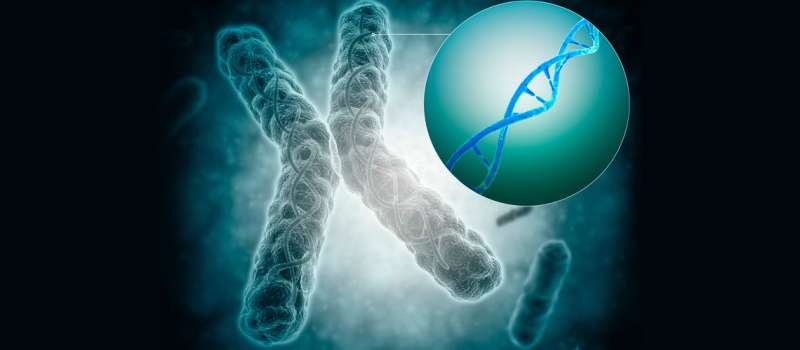A deeper understanding of chromosome capping could improve therapies for both cancer and aging

Switching off the enzyme that adds protective caps to chromosome ends could help fight many types of cancer, A*STAR researchers have shown. The team demonstrated the treatment's potential by using it to thwart tumor growth in mice.
The zipper style of DNA replication means that the tips of chromosomes cannot be copied, leaving them slightly shorter with each cell division. To prevent loss of genetic information, chromosome ends are protected by caps called telomeres—repetitive, gene-free regions (see image). Each division shortens the telomeres, until they disappear and the cell can no longer divide. In cells that need to divide indefinitely, such as stem cells, an enzyme called telomerase extends telomeres, allowing cells to keep dividing.
However, cancer cells can hijack telomerase, and in non-stem, or somatic, cells, repressing telomerase is an important cancer prevention mechanism.
Telomerase has been well-studied, and yet the suppression mechanism was unknown. Knowing that telomerase is almost identical in humans and mice, but telomerase is not suppressed in mice, Shang Li, a lead author of the study, and colleagues, located two genetic switches distant from the telomerase gene.
They found that a master regulator of development, HOXC5, and the microRNA mir-615-3p, which is nested inside the HOXC5 gene, act together to suppress telomerase through these distant switches. Further study showed that the switches are present in many long-lived mammals, including humans and chimpanzees, but not in short-lived mammals, like mice and rats, as an extra barrier against the increased tumor risk that accompanies a longer lifespan.
To confirm their hypothesis, the team artificially increased HOXC5 and mir-615-3p in tumor cells introduced into mice. Tumor growth was strongly inhibited, thanks to suppression of telomere extension; telomeres shortened rapidly and cell division was disrupted.
"This study is a classic example of how a protein-coding gene, HOXC5 and its associated microRNA, together control the expression of [telomerase] and failure of this mechanism can contribute to cancer progression," says Prabha Sampath, of the A*STAR Institute of Medical Biology, Singapore.
Telomerase is involved in over 85 per cent of human cancers, which means telomerase-specific treatments could have broad applications.
Interestingly, the findings also have implications for aging, since "limiting the cell proliferation capacity of somatic cells eventually leads to aging," says Li. The team now aims to find other genetic elements involved in silencing telomerase during healthy stem cell differentiation. "Identifying these factors will provide the possibility of either activating telomerase for anti-aging therapy or inhibiting telomerase for cancer therapy."
More information: TingDong Yan et al. HoxC5 and miR-615-3p target newly evolved genomic regions to repress hTERT and inhibit tumorigenesis, Nature Communications (2018). DOI: 10.1038/s41467-017-02601-1


















